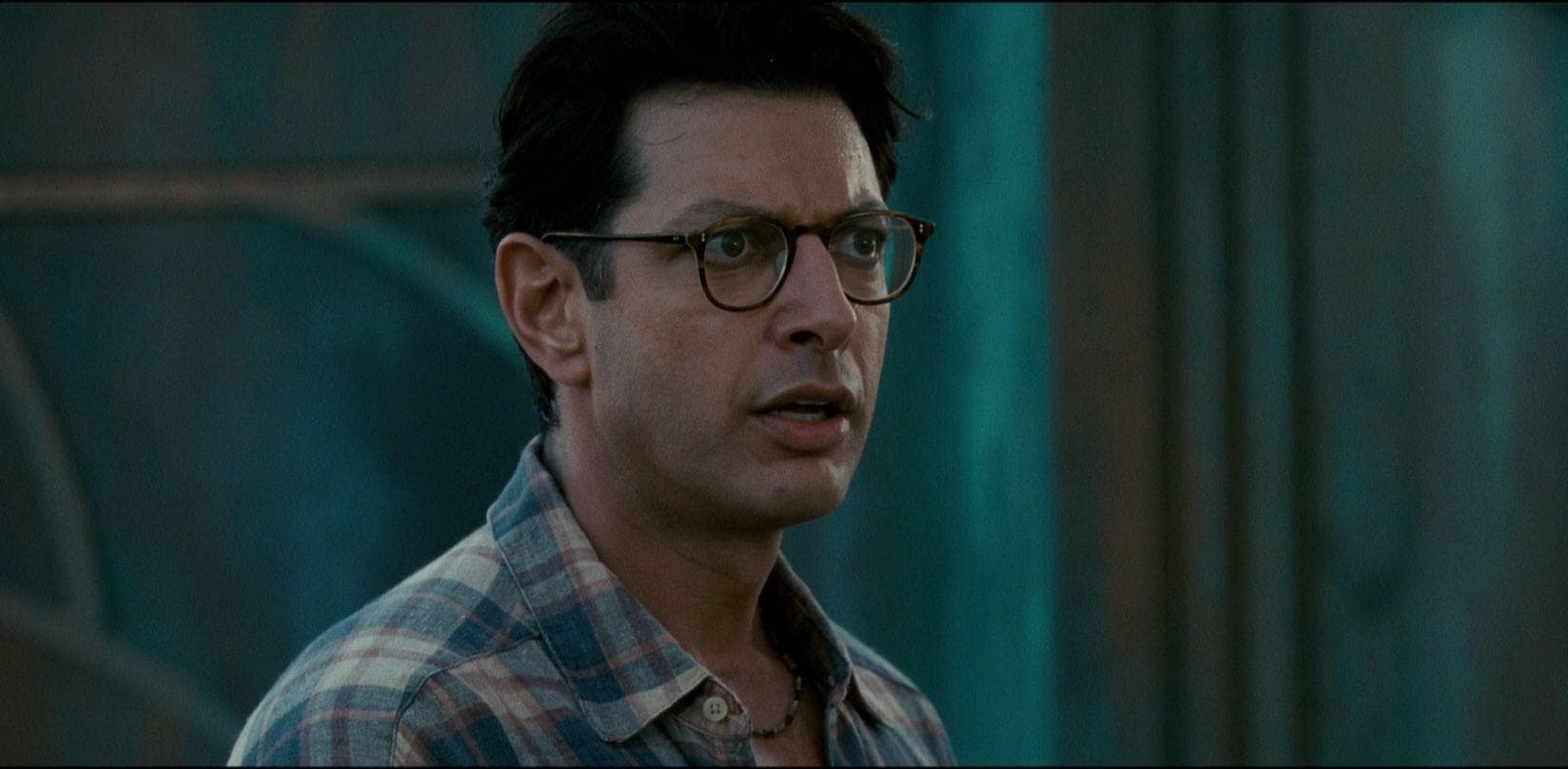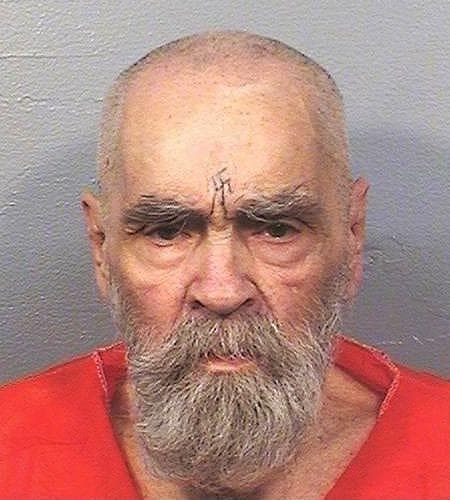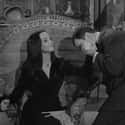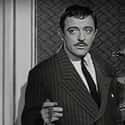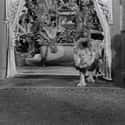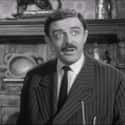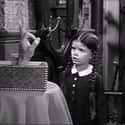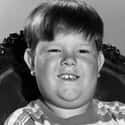Random Charming And Intriguing Behind-The-Scenes Stories From ‘The Addams Family’ TV Show (20 items)
-
(#1) John Astin Was Originally Supposed To Play The Family’s Butler
After appearing in a film called The Wheeler Dealers produced by Filmways (the company that would produce The Addams Family), John Astin negotiated a contract with the company. When he met with the assistant to the head of Filmways, Astin was told about three projects: the films The Americanization of Emily and The Loved One, and a television project involving Charles Addams's cartoons. He could be in only one of the projects, and although he wanted to do The Americanization of Emily (James Coburn ended up playing the key role), the television project was the one likely to be produced first.
When he first met with the show's executives about possibly being cast for The Addams Family television show, he was offered the part of the butler, who was originally the main character. The actor had doubts about his ability to play the role, which he expressed to executive producer David Levy at a follow-up meeting. Levy agreed that he shouldn't play the butler, then offered him the part of the husband instead. When Astin accepted, the focus of the series was changed.
In 2012, Astin told a reporter for the Baltimore Sun that Levy had described the show to him as "Father Knows Best - with other people."
In an interview with the Television Academy Foundation, Astin said that the producers gave him a lot of leeway in terms of shaping the character of Gomez, although he did have a fight with the network over shaving his hair in the back to resemble the cartoon. He also said that while he did some of the stunts on the show, including swinging on a trapeze and standing on his head, he had a stuntman who did most of the more difficult tricks.
-
(#2) Ted Cassidy As Lurch Cut A Pop Record Meant To Start A Dance Craze
In 1965, Ted Cassidy in the character of Lurch cut a pop record called "The Lurch." The single, which had a narrated story titled "Wesley" as the B-side, was released by Capitol Records.
Cassidy performed it on Halloween 1965 on Shindig!, leading a bunch of teenagers in the dance of the same name. The dance became a short-lived craze, but the song, which was written by Gary Paxton (the producer behind "The Monster Mash"), did not become a major hit.
-
(#3) John Astin Claimed That He And Carolyn Jones Were Genuinely Attracted To Each Other
John Astin has admitted that he and Carolyn Jones were immediately attracted to each other but kept things strictly professional. They used their personal chemistry to give Gomez and Morticia "a grand romance" as an antidote to the virtually sexless parents then common on television shows. In an interview for the Television Academy Foundation , Astin said that while he and Jones had different comedic styles, those styles blended very well.
“There’s a playful sexuality between Gomez and Morticia, the kind you wish your parents would’ve exhibited,” said Andrew Lippa, the Tony Award-nominated composer and lyricist of the Addams Family Broadway musical . “Here I am watching reruns after school every day of a beautiful couple who lets you know it’s okay to touch.”
"We used to do joke promos for the show, where I'd say 'My wife and I are the best-adjusted couple on television,'" Astin told the Baltimore Sun in 2012. "I think we influenced the tone of the '60s with that kind of freedom and warmth - you know, peace and love. But the fact that Gomez and Morticia got obviously excited about one another was something the studio got letters on, which was kind of stupid."
In James Pylant's biography of Jones , her stepdaughter Deborah Greene was quoted stating that Jones had complained about Astin always trying to upstage her and hog the camera. But the people Pylant interviewed who had worked with Astin and Gomez on The Addams Family denied having ever seen any tension between the actors. And when Jones passed, it was Astin who delivered the eulogy at her funeral.
-
(#4) Jackie Coogan, AKA Uncle Fester, Was A Child Actor Who Inspired A Law Created To Protect The Earnings Of Minors
Jackie Coogan (1914-1984) was just four years old when he was discovered by Charlie Chaplin while performing in a vaudeville act. The child rocketed to film stardom in 1921 when he played the orphaned boy in Chaplin's silent film The Kid, which many historians consider to be the comedian's best movie. Coogan played the title role in Oliver Twist the following year. He was one of the first film stars to be heavily merchandised, with items such as whistles, peanut butter, stationery, and dolls among the Coogan-themed products that people could purchase.
Although Coogan's career waned as he grew older, it was estimated that he had earned somewhere between $2 million and $4 million dollars as a child star. The fortune was expected to be intact, as his father had managed his son's finances conservatively. But his father lost his life in May 1935, just months before Coogan's 21st birthday.
Coogan had never received any money from his work as a child; instead, his parents gave him a weekly allowance of $6.25. When he turned 21, his mother, Lillian, and stepfather, Arthur Bernstein, announced they wouldn't turn any of the millions Coogan had earned over to him.
''The law is on our side, and Jackie Coogan will not get a cent from his past earnings,'' Bernstein declared at a news conference. Two years later in 1938, Coogan sued the couple, who reportedly had squandered the money on cars, jewelry, and furs. When the case was settled, after expenses, all Coogan received was $35,000.
After he filed suit against his mother and stepfather, the California State Legislature introduced a new law that said that all juvenile actors' earnings had to be deposited in court-administered trust funds. Officially called the California Child Actor's Bill, it is more commonly called the "Coogan Law" and went into effect in 1939, although it has been substantially revised since then.
Coogan, of course, later found fame once again as Uncle Fester on The Addams Family.
-

(#5) 'The New Yorker' Refused To Publish 'The Addams Family' Cartoons Once The Television Series Debuted
When Charles Addams sold his first cartoon to The New Yorker in 1932, he received $7.50 for the sketch of a window washer. His cartoons of Addams Family characters began appearing in the magazine in 1938. This first illustration, which the cartoonist dubbed "Vacuum Cleaner," shows a salesman trying to convince a pale, sultry-looking woman in a long black dress to buy a vacuum cleaner. A hulking, bearded servant stands beside the woman.
The joke came from the fact that the clueless pitchman is standing in what appears to be a haunted house, its gloominess punctuated by cobwebs and a bat. Addams would later describe the lady in the illustration, whom he dubbed the “witch-woman,” as “my idea of a pretty girl” and leave it at that. The cartoon ran on page 9 of the August 6, 1938, issue of The New Yorker, and Addams was paid $85.
Addams had not intended to turn that first cartoon into a series. It was New Yorker founder and editor Harold Ross who suggested Addams bring the characters back for further cartoons. The nameless “witch-woman” and her servant (now clean-shaven) returned the following year, and on November 14, 1942, the “witch-woman” was given a mate, a pudgy, smarmy fellow with a pencil moustache and hair parted in the middle. Two children later appeared, as did other characters in the family. During the 1940s and 1950s, 58 of these “family” cartoons appeared in The New Yorker.
Whether it was because of media snobbery or some other reason, The New Yorker refused to publish any more of the cartoons featuring the family while the television series was on the air, or even after the show was canceled. Addams was allowed to use them where he liked otherwise, but still managed to slyly sneak them into his other New Yorker cartoons on occasion.
-
(#6) The Series' Pilot Was Directed By A Future Academy Award Nominee
The pilot episode of The Addams Family, entitled "The Addams Family Goes To School," was directed by a 40-year-old director who had just completed filming James Garner and Julie Andrews in The Americanization of Emily.
That director's name was Arthur Hiller. He had extensive previous experience in television, including being nominated for an Emmy for his directing work. But his biggest achievement would come after he filmed the pilot of The Addams Family when he would win the Golden Globe and earn a nomination for an Academy Award for his direction on the blockbuster romantic tearjerker Love Story.
-
(#7) The Pockets Of Gomez's Suits Were Lined With Asbestos
In the television series, Gomez Addams is often seen holding or smoking a lit cigar, which he then often put in his suit pocket. In order to protect John Astin getting singed or the costumes having holes burned in them, the show's prop masters lined the suit pockets with asbestos.
Although the character occasionally smoked in the original Charles Addams cartoons, he became a heavier smoker on the television series. Astin was a cigar smoker in real life and thought it would be a good character quirk for Gomez. "We never wanted Gomez to use a short cigar," Astin told Stephen Cox. "It wasn't elegant. If we got to take two, three, four... and the cigar ash was getting too long, I would have to light up another cigar."
-
(#8) Lurch Got Fan Mail From Teenage Girls
Lurch may have been a man of few words, but that didn't keep him from being a hit with the ladies.
Ted Cassidy got a lot of fan mail from teenage girls.
-
(#9) Carolyn Jones’s Morticia Costume Took ‘About 20 Minutes’ To Get Out Of
Carolyn Jones and costume designer Nolan Miller wanted a unique costume for Morticia that was both comical and sexy. Miller said that Morticia's outfit was the most difficult one he ever had to design; the dress was very tight, especially around the feet, but had Velcro up the back, allowing the dress to be opened so that Jones could walk around when she wasn't on camera. Reportedly, there were 30 identical dresses made.
In a backstage interview, Jones said that between her wig (which was made of real human hair), makeup, and costume, it took her about two hours to get out of everything; the dress alone took "around 20 minutes."
-
(#10) Ken Weatherwax And Lisa Loring Were Not Allowed On Set When There Were Scenes Involving The Family's Pet Lion
Named "Kitty Kat," the Addamses' pet was in reality said to be a retired circus lion. Although there was a trainer named Steve Martin on set, the people running the show were very careful to try and keep the set as safe as possible in any scenes involving the lion. In fact, the actors playing Wednesday and Pugsley (Lisa Loring and Ken Weatherwax) were not allowed on set when they were shooting scenes with the lion.
To minimize the danger to the cast, they filmed the scene of the lion coming down the stairs just once, then they reused the footage when needed.
-
(#11) Carolyn Jones Was Charles Addams's Personal Choice To Play Morticia
Once John Astin was cast as Gomez, the hunt was on for the actor to play Morticia. The producers pursued Barbara Steele for the part. But Steele, who was living in Rome at the time, wasn't interested in returning to the United States to do a television series. Creator David Levy wasn't happy with any of the actors that had tested.
It was her estranged husband Aaron Spelling (the couple were in the midst of a divorce at the time) who alerted her that the producers were looking for a "Carolyn Jones-type" to play Morticia. Jones had turned down other television parts, as she wanted to focus on her film career. She had had success as a supporting actor, including earning an Academy Award Nomination for Best Supporting Actress for her role in Bachelor Party (1957), but was frustrated that she hadn't really been able to move into leading roles.
But then Spelling told her the series was going to be based on the cartoons of Charles Addams. Jones was already a fan of Addams's work (he appealed to her "snob instincts," she said later), and had even met him on a film set one time; a meeting that didn't go smoothly, as her poodle, Contessa, bit him. Still, Addams was eager for Jones to accept the role; after she agreed to do the series, the cartoonist sent her a telegram that read, "I know you will make a darling Morticia. But please leave Contessa at home!" The two would quickly become close friends.
Carolyn believed that her large, bulging eyes, which she had once hated, were the reason she got the part.
-
(#12) Lurch Wasn't Meant To Speak, Until Ted Cassidy Ad-Libbed 'You Rang?' In His Audition
Originally, the character of the butler was not meant to speak, only groan or grunt. But when Ted Cassidy ad-libbed the line, "You rang?" in his audition in a scene where the family rang the servant bell, it went over so well that Lurch was rewritten to speak on occasion.
Cassidy's character became so popular that the writers eventually came up with episodes that centered around the character, such as when Lurch's mother comes to visit.
-
(#13) Since Lisa Loring Wasn’t Allowed To Smile As Wednesday, Carolyn Jones Would Make Her Laugh In Between Takes
Wednesday Addams's name is a reference to the nursery rhyme "Monday's Child," which contains the line, "Wednesday's child is full of woe."
Because her character was supposed to be morose, an adult Lisa Loring explained in an interview that she was never allowed to smile while on camera, which she admitted was very strange for a young child. But in between scenes, Jones would do something to make Loring laugh.
-
(#14) John Astin’s Sons Would Ask Him To ‘Put On His Eyes’ And Scare Them
In a 1964 interview he did on American Bandstand, Astin said that when he came home one night still wearing his stage makeup, which caused two of his sons (who were 3 and 5, respectively) to scream and run away.
But when they saw him the next morning without his makeup on, they asked him to "put on his eyes" and scare them.
-
(#15) Members Of The Cast Said Many Of The Quirky Props Were Taken From The Closed Set When The Show Was Canceled
One part of the lyrics of The Addams Family's theme song goes, "Their house is a museum, when people come to see 'em..." And in a way, the set that served as the interior of the Addamses' home was a museum. The stage was furnished with a variety of unusual pieces, such as the harpsichord Lurch loved to play and a large stuffed brown bear (which was really a polar bear painted brown by the set designers).
In the commentary included on the DVD of the television series, some of the cast members stated that when news broke that the series wouldn't be renewed for a third series, many of the props were taken from the closed set. The whereabouts of those props reportedly remain unknown.
One prop that was not taken was the wicker chair that Morticia was often shown sitting in. The producers gifted the chair to Carolyn Jones, who kept it in her bedroom for the remainder of her life.
-

(#16) The 'Addams Family' Characters Were Nameless In The Original Cartoons
It was the cover of Charles Addams’s 1954 collection, Homebodies, featuring the Addams brood posed before their “haunted” mansion that captured the attention of David Levy, the former vice president of television programming at NBC, who had begun to produce show independently. Levy thought there was a television series to be based on Addams’s work; he met with the skeptical artist, hoping to convince him that he could bring the family to life while remaining faithful to the cartoonist’s distinctive sense of humor. Addams eventually agreed to Levy's idea, but the cartoonist had little role in the direction the series would go. Except for one thing: other than Cousin Itt, who was just called It, none of the characters in Addams's cartoons had names. So, he was asked to name them for the television series.
The one character he didn't name was that of the daughter - it was up to a novelty company, Aboriginals, Ltd., who were manufacturing tie-in Addams dolls to coincide with the launch of the show, to come up with Wednesday for the forlorn little girl, based on the poem "Monday’s Child." John Astin was given the choice of two names for his character, and he selected Gomez over Repelli (much to the disappointment of Charles Addams, who preferred the latter). The son's name, meanwhile, was originally going to be Pubert, but it was changed to Pugsley because Pubert sounded too sexual or dirty.
The name "Pubert" was later used for the Addams family's mustachioed third child, who made his debut in 1993's Addams Family Values.
-
(#17) Lisa Loring Doesn’t Remember Anyone Teaching Her The Steps For Her Infamous Dance Scene
In the Season 2 episode "Lurch's Grand Romance," Wednesday attempts to teach Lurch how to dance so he can impress a woman he is interested in. She tells Lurch that he needs to learn the dance so that his date won't think that he's "square."
In recent years, a clip of this scene that's up on YouTube has gotten more than two million views. In an interview she did at the 2018 Silicon Valley Comic Con, Loring said that she didn't really dance like that as a kid, but couldn't remember if a choreographer or someone else had taught her the steps.
-
(#18) John Astin Was A College Student When He First Discovered Charles Addams's Cartoons
John Astin graduated from Johns Hopkins University in 1952. It was as a college student that he first discovered Charles Addams's cartoons, even decorating his room with them. But it wasn't until he was cast in the television series that he really took a deep look at the work.
"There was nothing morbid about them, in my view," Astin told the Baltimore Sun in 2012. "The cartoons implied violence against a cliché or a habit of modern human beings. There's a line in Waiting for Godot: 'Habit is a great deadener.' My conclusion - I never discussed this with him - was that Charlie was trying to wake us up to the joy and wonder of life, which is so much more than what we experience through stale habit."
-
(#19) Lisa Loring Learned To Memorize Lines Before She Could Read
Lisa Loring was just five years old with limited acting experience when she was cast in the role of Wednesday Addams; she learned later that she was chosen in large part because she looked like Carolyn Jones, who was to play her character's mother, Morticia. She was so young that she learned to memorize her lines before she could read. According to Loring, at her audition, the executive producer David Levy read her lines to her, and after the second time through, she was able to repeat them back to him. She later did a screen test and Levy and John Astin chose her for the part.
As of October 2019, Loring is one of the three surviving cast members of The Addams Family television series; the others are John Astin and Felix Silla (who played Cousin Itt).
-
(#20) Ken Weatherwax Was Allergic To The Clothes The Costume Designers Made For Him
Ken Weatherwax, who played the quiet, inventive Pugsley on The Addams Family, came from a show business family; he was the nephew of '30s film star Ruby Keeler, as well as of the man who worked as Lassie's trainer. Prior to being cast on The Addams Family, he had become a familiar face on television due to a series of commercials for Gleem toothpaste.
His health issues caused some issues on the set; he was allergic to a multitude of things, including the 100% wool clothes the costume designers made, so his mother bought the clothes he wore on the show.
New Random Displays Display All By Ranking
About This Tool
The Adams Family is a Gothic healing TV series that was released in 1938. It tells the story of the Ada family living in the ruins of a Victorian building. Their lives are and decent as a noble family. There is a vault in the cellar for them to enjoy their lives, but the greedy lawyers wanted to use poison to rob their immense wealth.
The Adams family is an irony of the ideal American family of the 20th century: a weird, wealthy but creepy family and doesn't care about others. The movie was famous since its release. The random tool introduced 20 interesting behind-the-scenes stories in the filming process here.
Our data comes from Ranker, If you want to participate in the ranking of items displayed on this page, please click here.



